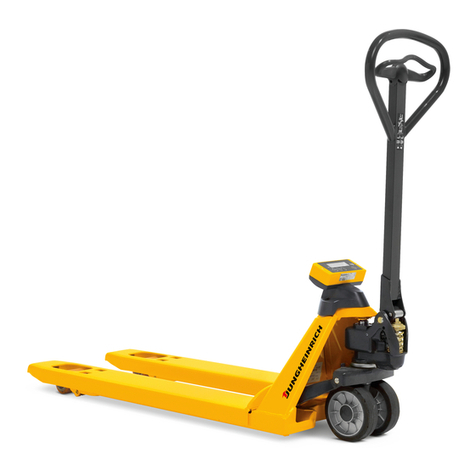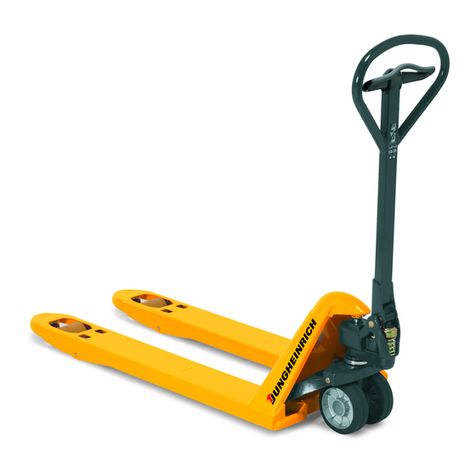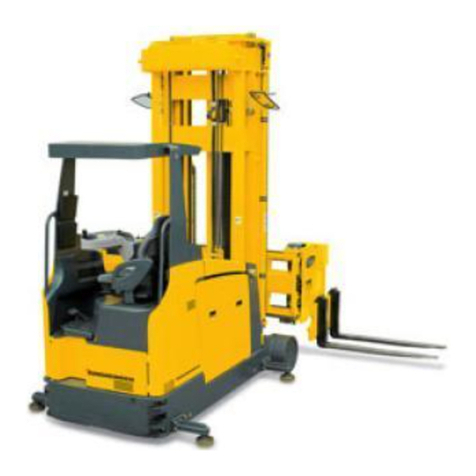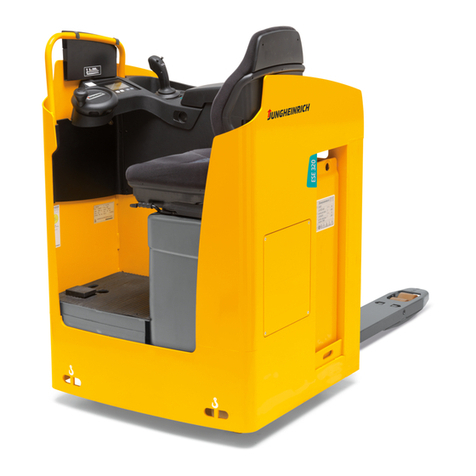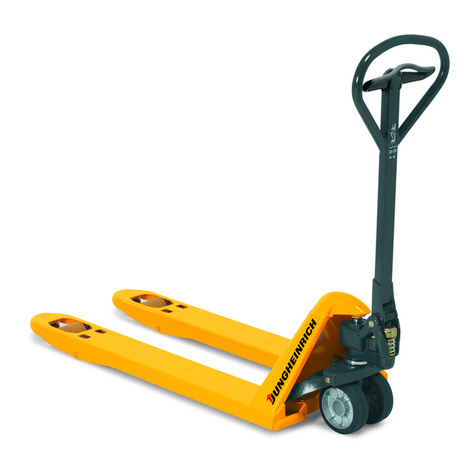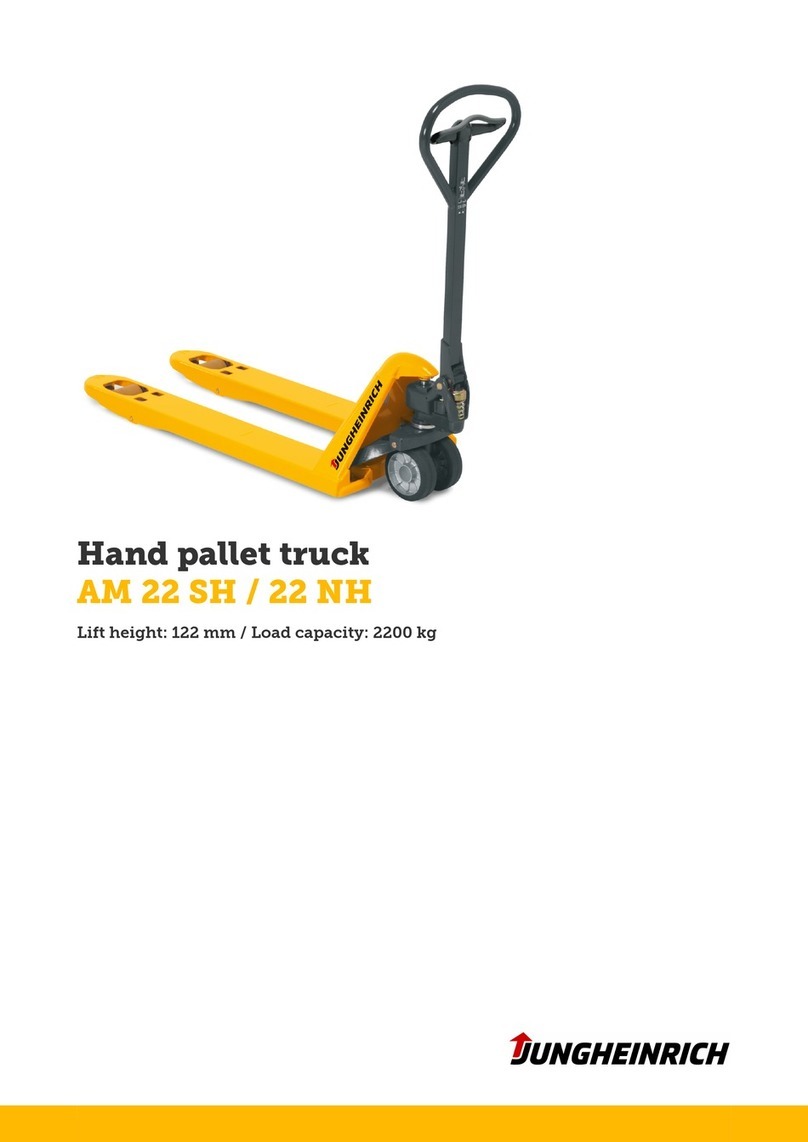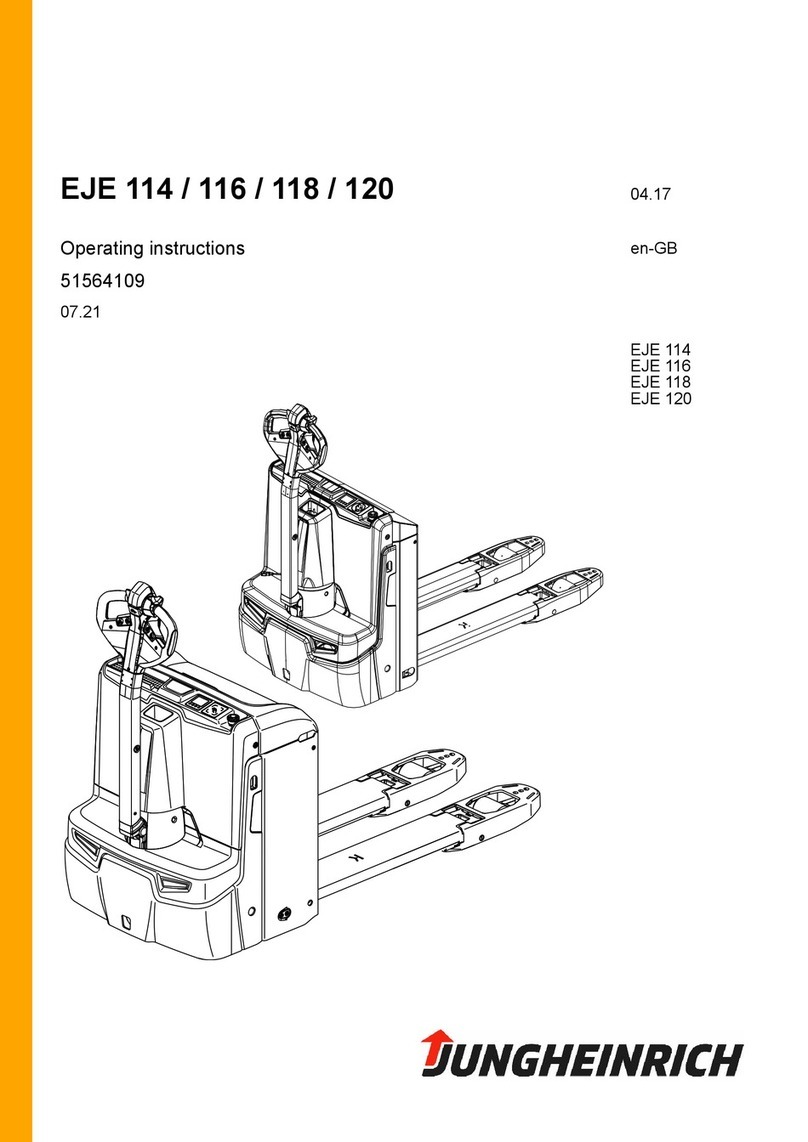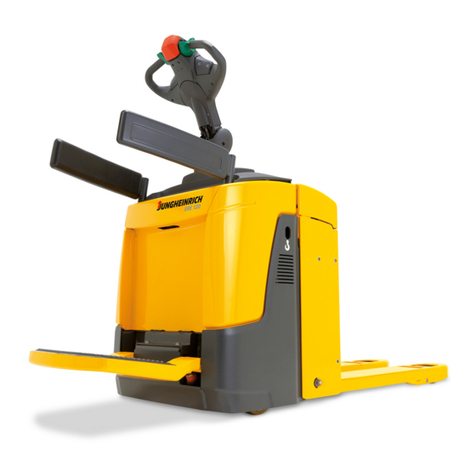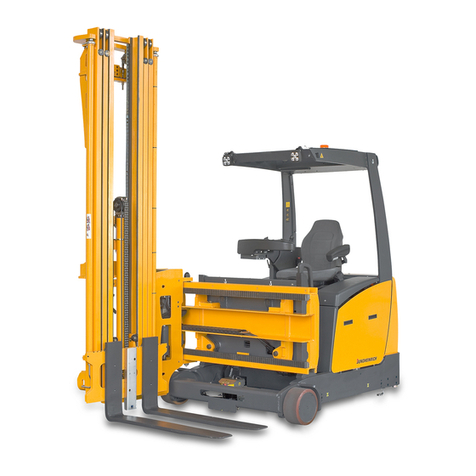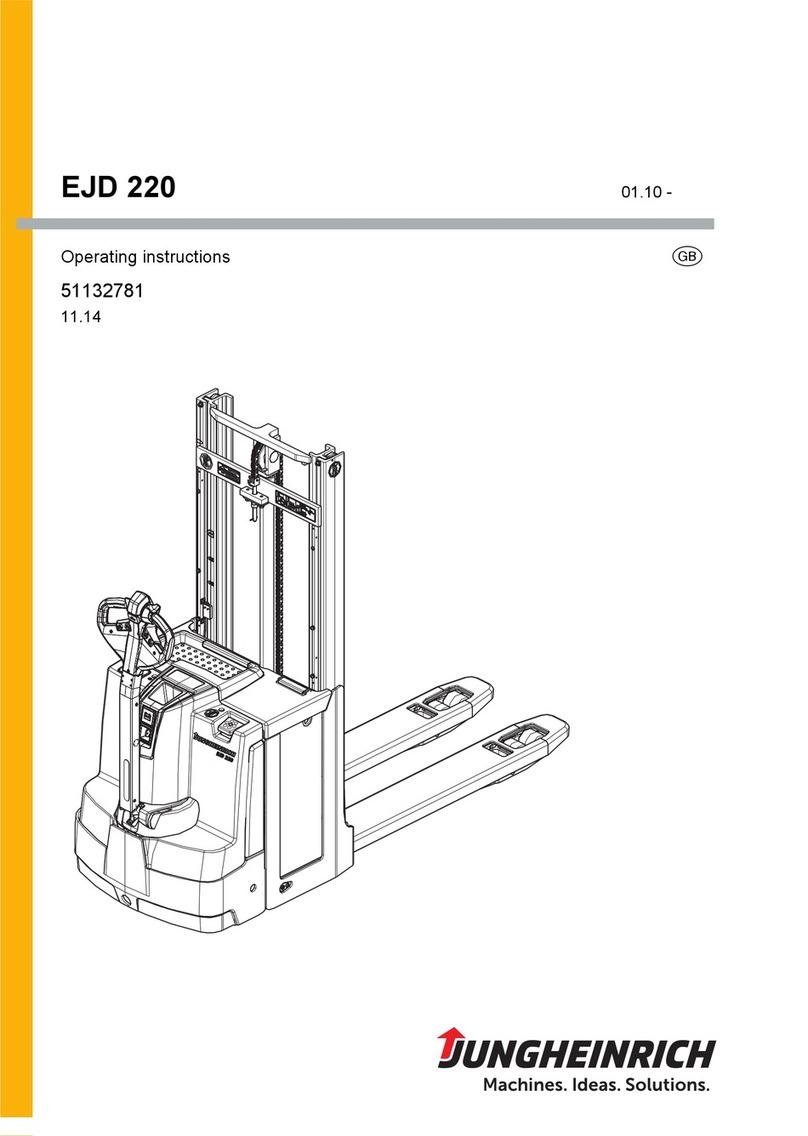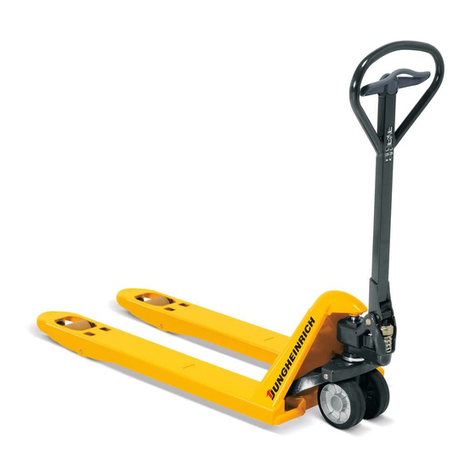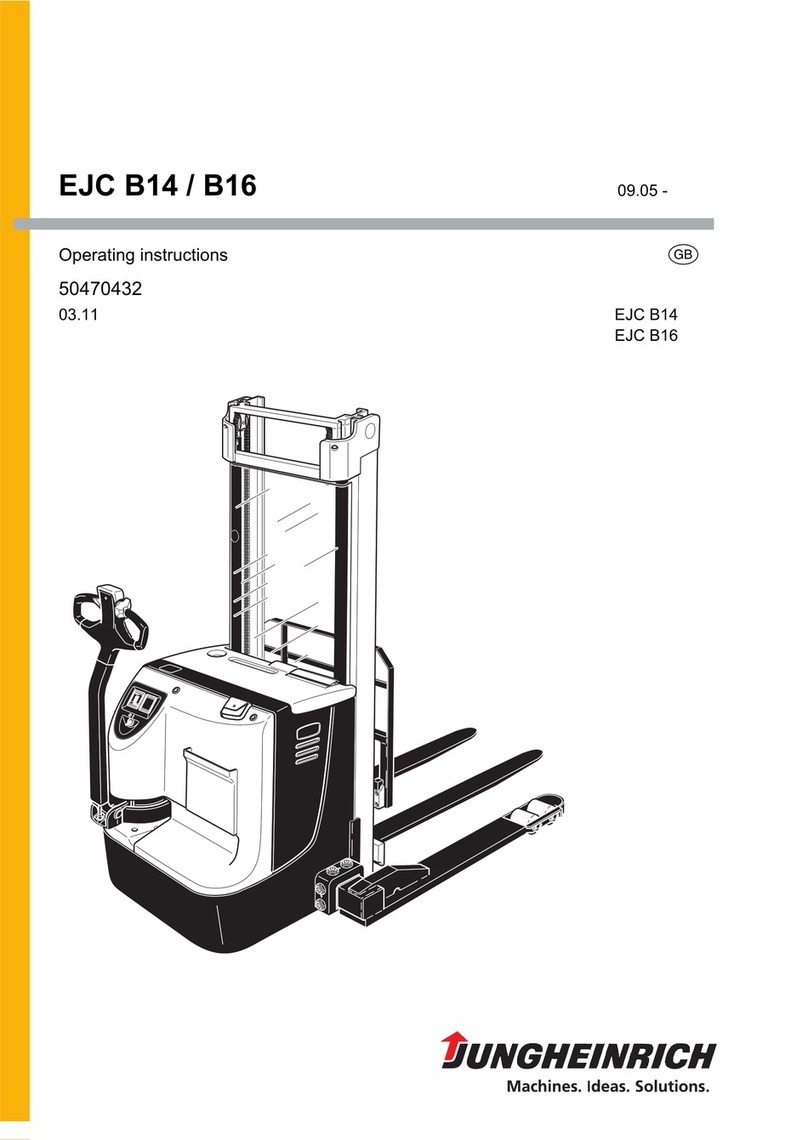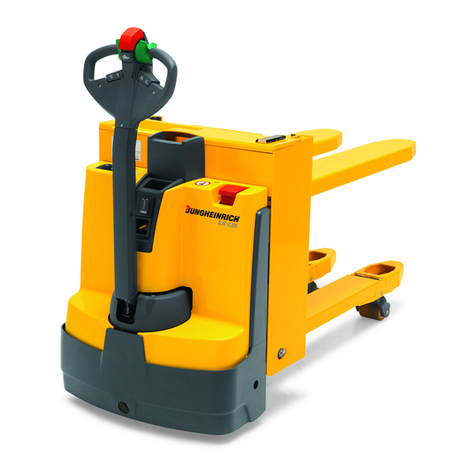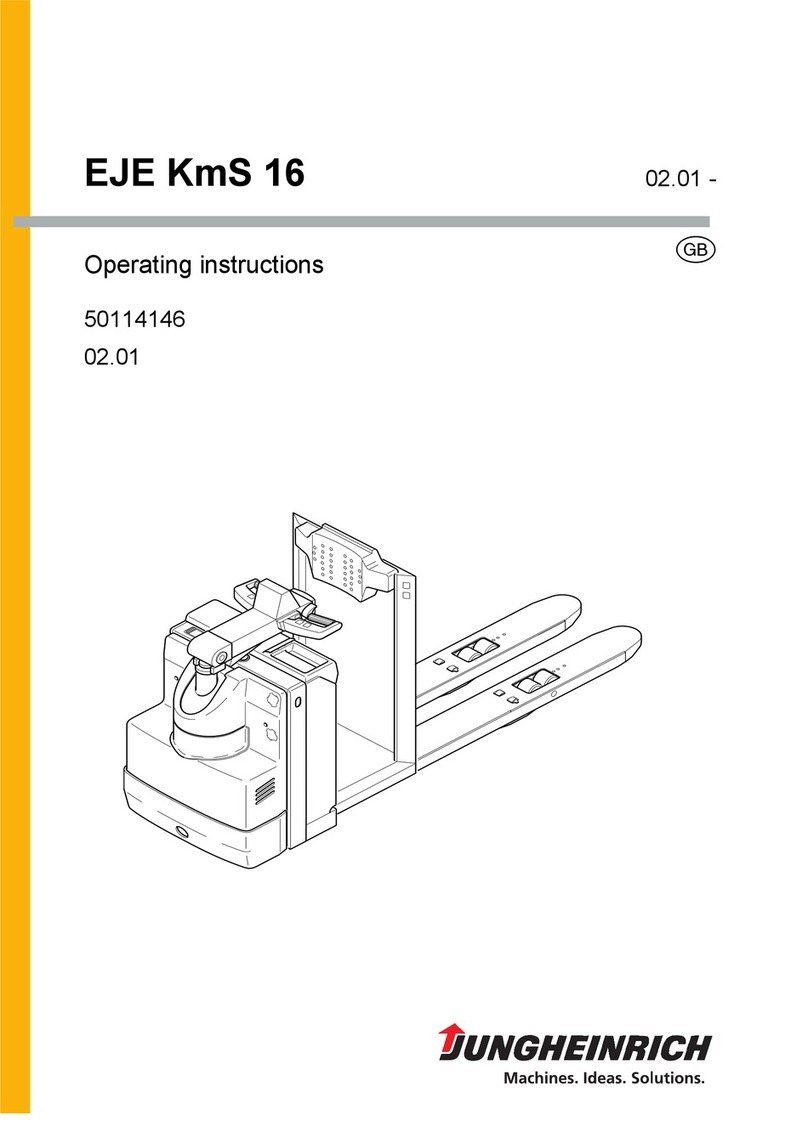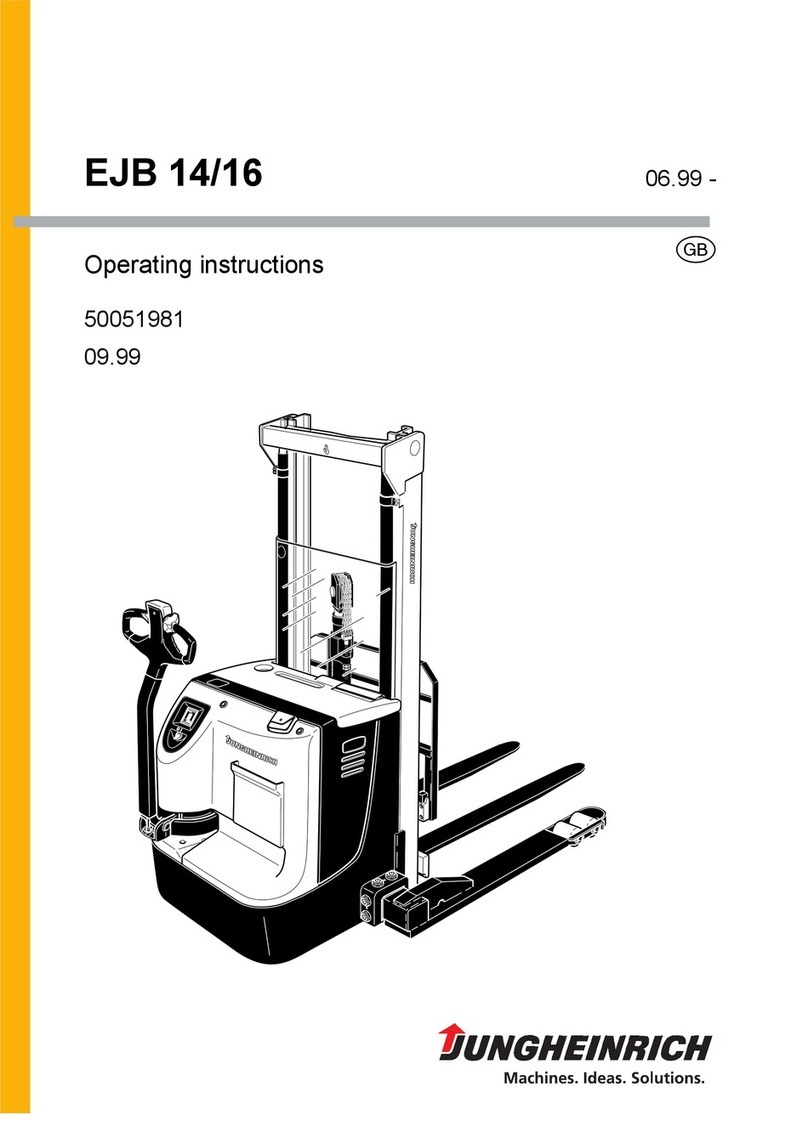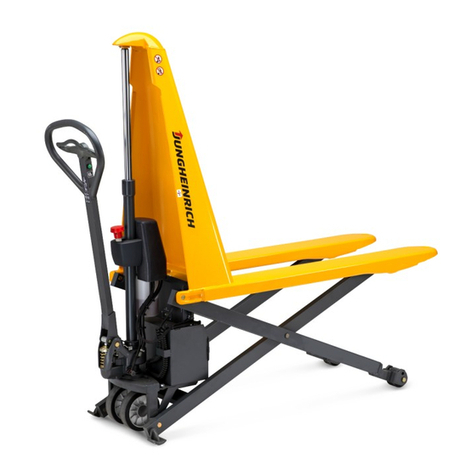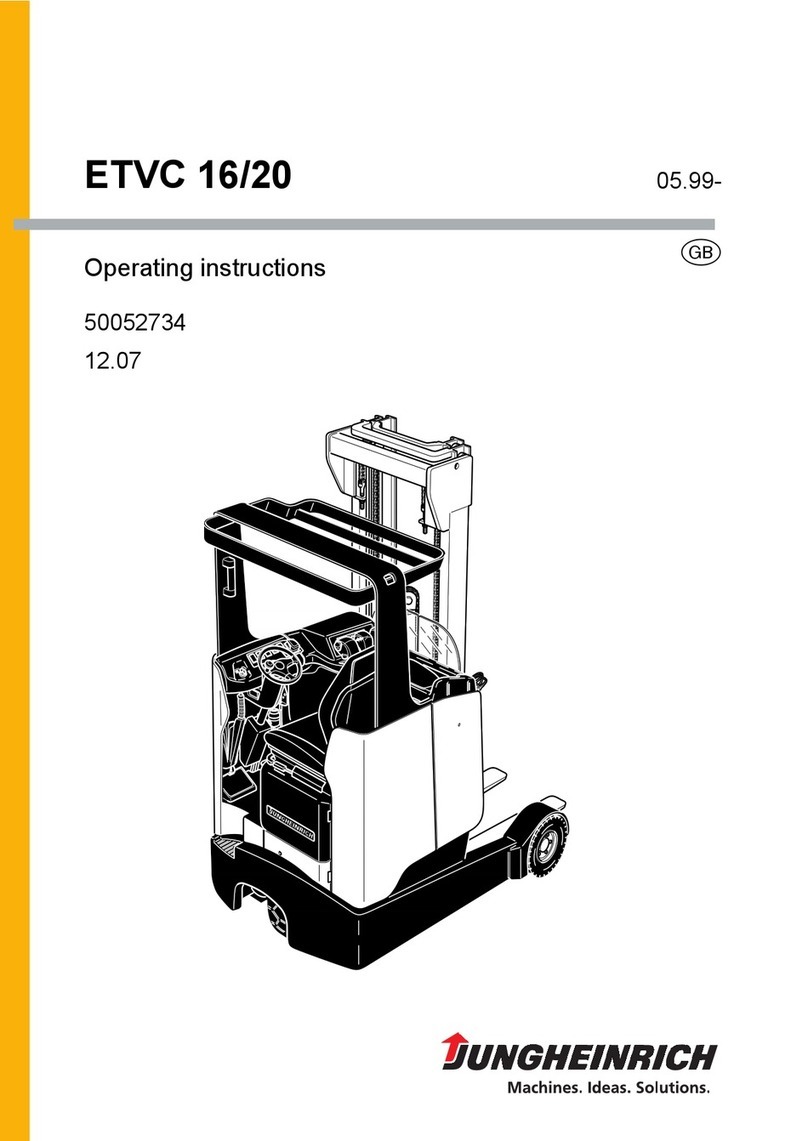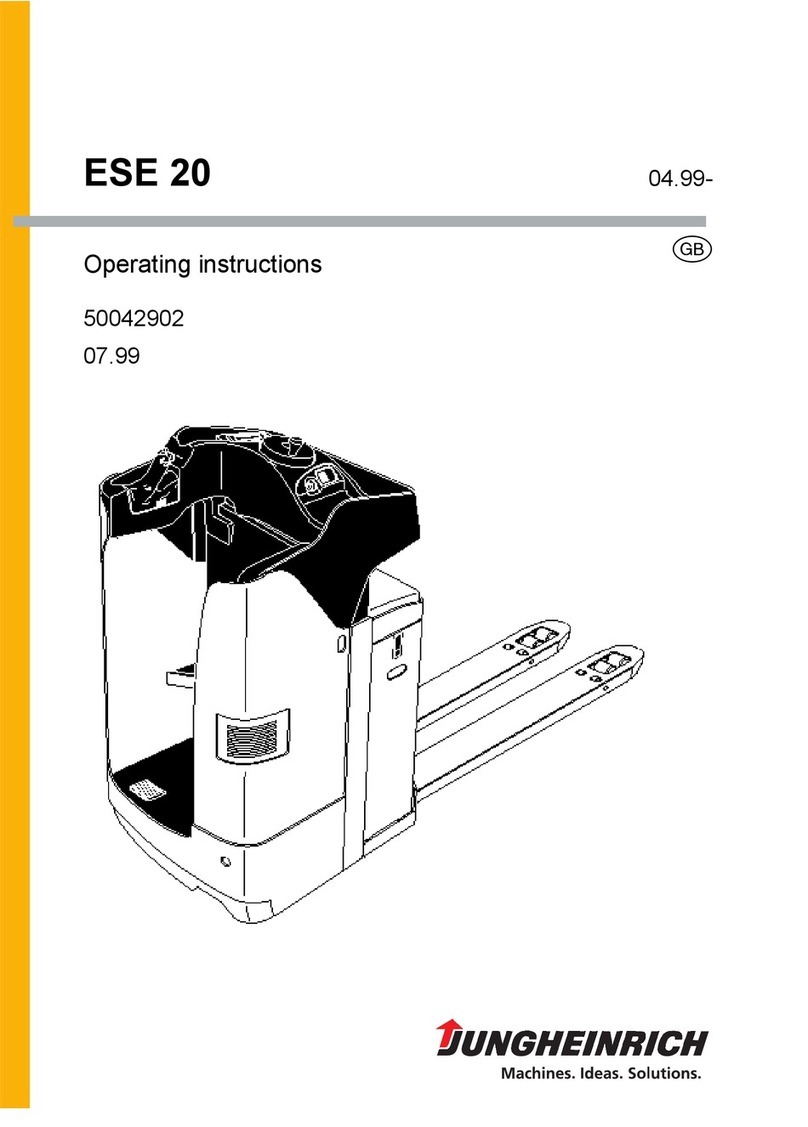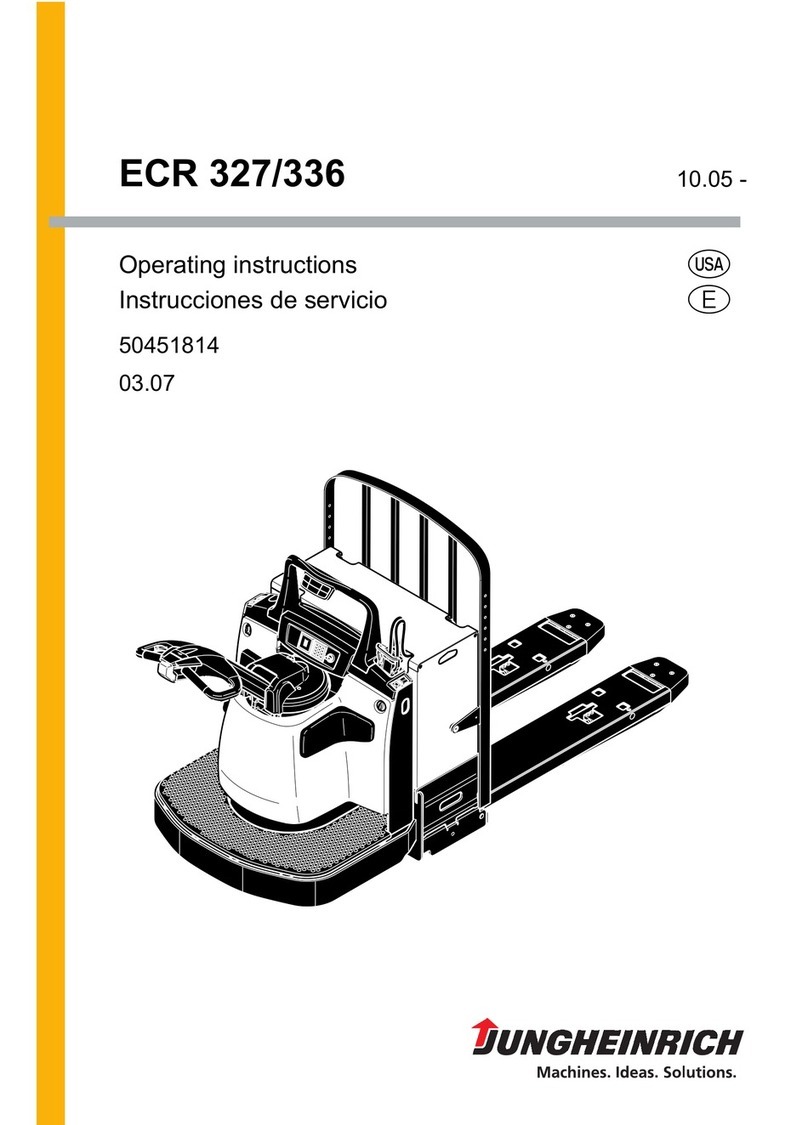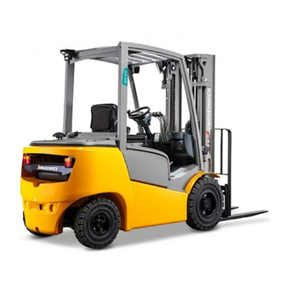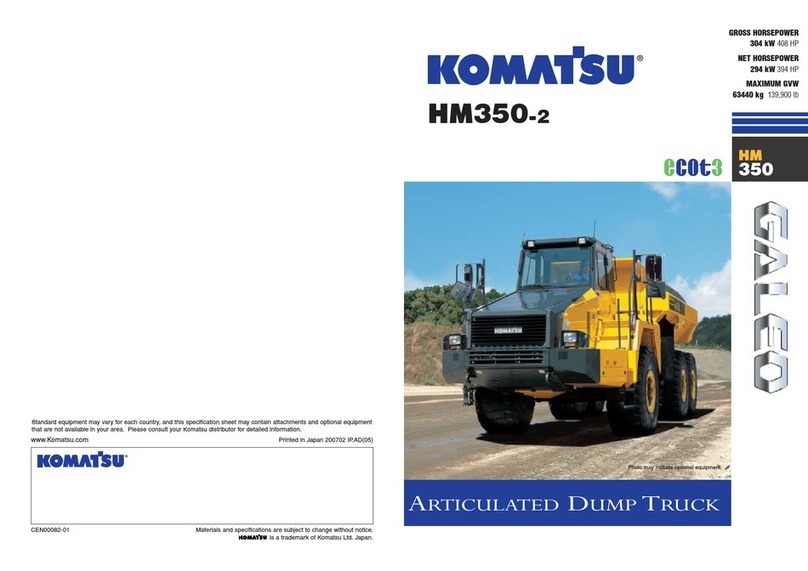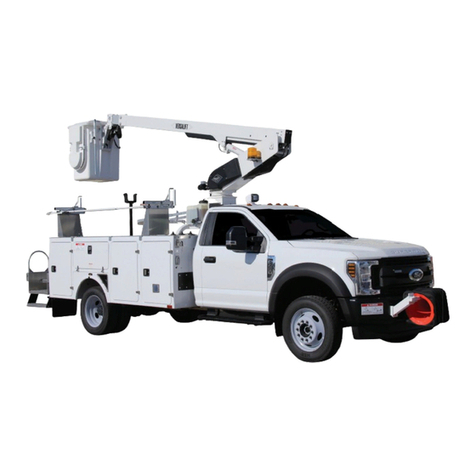
A 1
1107.GB
A Correct use and application of the truck
ZThe “Guidelines for the Correct Use and Application of Industrial Trucks“ (VDMA) are
supplied with the truck. The guidelines form part of these operating instructions and
must be observed. National regulations apply in full.
The truck described in the present operator manual is an industrial truck designed for
lifting and transporting load units.
It must be used, operated and serviced in accordance with the present instructions.
Any other type of use is beyond the scope of application and can result in damage to
personnel, the truck or property. In particular, avoid overloading the truck with loads
which are too heavy or placed on one side. The data plate attached to the truck or the
load diagram are binding for the maximum load capacity. The industrial truck must
not be used in fire or explosion endangered areas or in places which can result in
corrosion or produce dust.
Proprietor responsibilities: For the purposes of the present operator manual, the
“proprietor” is defined as any natural or legal person who either uses the industrial
truck himself, or on whose behalf it is used. In special cases (e.g. leasing or renting)
the proprietor is considered the person who, in accordance with existing contractual
agreements between the owner and user of the industrial truck, is charged with
operational duties.
The proprietor must ensure that the truck is only used for the purpose it is designed
for and that all dangers to life and limb of the user and third parties are avoided.
Furthermore, accident prevention regulations, safety regulations and operating,
servicing and repair guidelines must be followed. The proprietor must ensure that all
truck users have read and understood this operator manual.
MFailure to comply with the operator manual shall invalidate the warranty. The same
applies if improper work is carried out on the truck by the customer or third parties
without the permission of the manufacturer’s customer service department.
Mounting attachments: The mounting or installation of additional equipment which
affects or supplements the performance of the industrial truck requires the written
permission of the manufacturer. In some cases, local authority approval shall be
required.
Approval of the local authorities however does not constitute the manufacturer’s
approval.
A 1
1107.GB
A Correct use and application of the truck
ZThe “Guidelines for the Correct Use and Application of Industrial Trucks“ (VDMA) are
supplied with the truck. The guidelines form part of these operating instructions and
must be observed. National regulations apply in full.
The truck described in the present operator manual is an industrial truck designed for
lifting and transporting load units.
It must be used, operated and serviced in accordance with the present instructions.
Any other type of use is beyond the scope of application and can result in damage to
personnel, the truck or property. In particular, avoid overloading the truck with loads
which are too heavy or placed on one side. The data plate attached to the truck or the
load diagram are binding for the maximum load capacity. The industrial truck must
not be used in fire or explosion endangered areas or in places which can result in
corrosion or produce dust.
Proprietor responsibilities: For the purposes of the present operator manual, the
“proprietor” is defined as any natural or legal person who either uses the industrial
truck himself, or on whose behalf it is used. In special cases (e.g. leasing or renting)
the proprietor is considered the person who, in accordance with existing contractual
agreements between the owner and user of the industrial truck, is charged with
operational duties.
The proprietor must ensure that the truck is only used for the purpose it is designed
for and that all dangers to life and limb of the user and third parties are avoided.
Furthermore, accident prevention regulations, safety regulations and operating,
servicing and repair guidelines must be followed. The proprietor must ensure that all
truck users have read and understood this operator manual.
MFailure to comply with the operator manual shall invalidate the warranty. The same
applies if improper work is carried out on the truck by the customer or third parties
without the permission of the manufacturer’s customer service department.
Mounting attachments: The mounting or installation of additional equipment which
affects or supplements the performance of the industrial truck requires the written
permission of the manufacturer. In some cases, local authority approval shall be
required.
Approval of the local authorities however does not constitute the manufacturer’s
approval.

